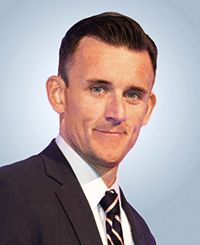Pharm Exec Joins MJH Portfolio
Michael J. Hennessy Jr., president of MJH Associates‚ Inc., answers questions about the acquisition of UBM Life Sciences media brands and his company’s perspective on the evolving biopharma landscape.
Michael J. Hennessy Jr., president of MJH Associates‚ Inc., which recently acquired media assets, including Pharmaceutical Executive, from the UBM Life Sciences Group, answers questions about the acquisition and his company’s perspective on the evolving biopharma market and treatment landscape.
The acquired UBM Life Sciences assets have formed a new business unit within MJH called MultiMedia Healthcare, LLC. How do they fit into the overall MJH portfolio?
Michael J. Hennessy Jr., president, MJH Associates

We recognized that combining the great content platforms and leadership brands that UBM Life Sciences has with our capability of developing multimedia platforms will leave no question that the new company will be at the forefront of providing access to trusted healthcare information now and into the future.
Your clients currently comprise world-leading pharmaceutical, medical device, diagnostic, and biotech companies. From your vantage point, what are the major challenges currently facing biopharma executives?
This is a time of extraordinary innovation, with the industry developing therapies that significantly increase survival or even cure diseases. However, these treatment advances often come with corresponding cost increases. The two chimeric antigen receptor (CAR) T-cell therapies, Kymriah and Yescarta, both have price tags above $400,000, and the gene therapy Luxturna, which treats inherited vision loss, costs more than $400,000 per eye.
The biggest challenge is getting payers to cover these life-saving and industry-altering treatments so that patients can actually access pharmaceutical innovations. A cure can’t do any good if the people who need it most cannot access it.
Alternative payment models and novel financing mechanisms will play a role here, but these are largely in nascent stages of development. For instance, with the CAR T-cell therapies, reimbursement remains a challenge. We speak regularly with industry experts who tell us how the low reimbursement rate from CMS means medical centers are losing over $100,000 per patient when they treat with CAR T therapies. Obviously, that’s not sustainable, and without a solution it will mean not every patient whose life could be saved will have access to CAR T therapy.
We’re not just in the business of reporting on the problem; we bring together clinical, payer, and policy leaders to find solutions.
Many of the MJH brands cover specific therapeutic areas and are directed toward physicians. How is the physician landscape changing? What specific changes affect pharmaceutical executives?
The overall treatment landscape has been evolving very rapidly in the past few years. Physicians want access to trusted and timely resources to help inform care and optimize outcomes. At MJH, we have a number of ways that physicians can get access to research and information. We do this through medical publishing, live events, market research, video and digital production, agency services, and medical education.
The pharmaceutical executive also has concerns around pharmacy, specialty pharmacies, and managed care, primarily as it relates to patient access to drugs. As you also cover these industries, what do current trends in the pharmacy benefit and managed care indicate for pharma?
Every stakeholder in healthcare has a focus on balancing use of effective treatments and therapies with the actual cost and the value of the outcomes produced. A trend we continue to see is that these stakeholders are still looking for ways to consistently identify and quantify value; the challenge is that value is more than just dollars, and in some cases are subjective and relative to a disease or even to specific patients. When value is achieved and understood, access will follow.
Our approach and advice to manufacturers is to support stakeholders through education. Our platforms are designed to be a source of information to help stakeholders to understand the value of care, as well as be a platform and mechanism to share best practices with others.
The information and education we provide is also directed to enable patients to be a part of the decision-making process, enabling them to be leaders in their own care and a partner with their healthcare providers. After all, access to care doesn’t ensure that patients utilize that care.
The MJH Healthcare Research & Analytics group recently issued a report titled “Physician and Institution Preparedness for CAR T-Cell Therapy.” What are some of the key takeaways that would interest pharma executives?
One is that oncologists are most concerned about the cost of the therapy for the patient. Pharma can benefit from providing more training and educational resources about CAR T-cell therapy. Additionally, oncologists would like to see the clinical trial data from pharma companies involved in CAR T-cell trials. In addition, work needs to be done to prepare and train hospital staff to be able to deliver CAR T therapy safely and effectively and have the infrastructure available for the data/analytics needed to build safe and effective CAR T programs.

Addressing Disparities in Psoriasis Trials: Takeda's Strategies for Inclusivity in Clinical Research
April 14th 2025LaShell Robinson, Head of Global Feasibility and Trial Equity at Takeda, speaks about the company's strategies to engage patients in underrepresented populations in its phase III psoriasis trials.
Beyond the Prescription: Pharma's Role in Digital Health Conversations
April 1st 2025Join us for an insightful conversation with Jennifer Harakal, Head of Regulatory Affairs at Canopy Life Sciences, as we unpack the evolving intersection of social media and healthcare decisions. Discover how pharmaceutical companies can navigate regulatory challenges while meaningfully engaging with consumers in digital spaces. Jennifer shares expert strategies for responsible marketing, working with influencers, and creating educational content that bridges the gap between patients and healthcare providers. A must-listen for pharma marketers looking to build trust and compliance in today's social media landscape.